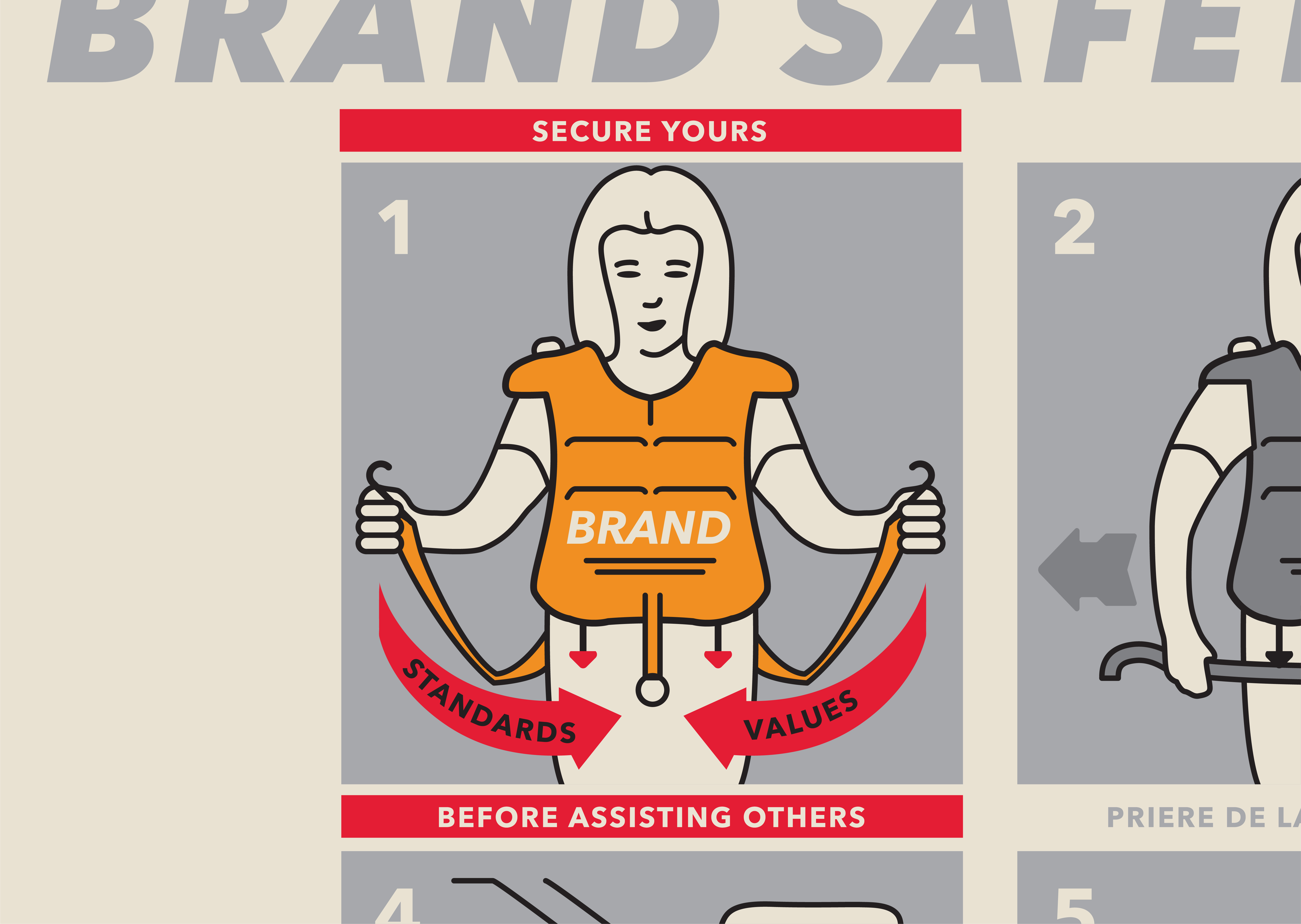Your brand is your most essential tool in a crisis.
The unprecedented circumstances of the coronavirus crisis, its financial fallout, and a groundswell of protests against police brutality have put the challenges brands face every day into high relief. Trust, consistency, engagement, differentiation, responsiveness — every dimension is under pressure as our normal means of working (and thinking about how and why we work) have been disrupted or questioned.
Stay true to your vision
It’s a lot like the treadmill stress test at your doctor’s office: when things get pushed to the limit, you get the true measure of the health of your business. And whether or not it will hold up under the pressure.
It’s hard enough to meet your competitive challenges when things are normal. Disruptions that are completely out of your control — like the pandemic and civil unrest we’re experiencing now — can leave you scrambling to respond in unfamiliar territory. That’s when it’s time to find something solid to hold onto; something you can use to ground your response and center your strategic way forward. And that’s your brand.
Get back to basics.
Being crystal clear on who you are and what you stand for, the value you deliver to your customers and the marketplace, and how your business is unique is the key to a great brand. It can also be an essential touchstone during a crisis. This is when all of the investments you made in your brand strategy, identity, and messaging can really pay off.

“How you respond and communicate during a crisis can have long-lasting effects on your brand image. It’s critical to get it right.”
What you say and do during a crisis should come directly from the core of the brand you’ve established. That means getting back to basics. Your mission statement, market positioning, value propositions, and your key messages were built to operate in the background, creating a framework for your business strategy and informing everything you say and do. During crises and disruptions, it’s time to bring these big themes closer to the surface.
Level set with your customers.
Refocusing on your core messages and themes will remind your customers of why they chose to work and transact with you in the first place, and why they continue to trust your brand. It also signals that the disruption is not going to change who you are and your value to your customers over the long term — even if it does affect or how you do business in the short term.
It can be as simple as pausing everyday sales and service messages to put your mission statement front and center on your homepage. Or you can take a more integrated approach, dialing up your core themes as part of ongoing advertising or marketing campaigns. Direct outreach can also be effective — your customers are probably as unsettled as you are and will appreciate a personal connection. If the message is authentic and on brand, it won’t feel forced or opportunistic, and it will give you the opportunity to stay connected when your business may be disconnected.
Expect the unexpected.
Your brand is the foundation of your crisis response strategy — but you need to be ready to put your big themes and messages to work. Here are some basics to think about, and things you can do ahead of time to help you get through this — and the next — crisis.
1. Create a brand handbook.
Create an easy-to-digest document that states your mission, key messages, and your strategic goals. This can be a great reference anytime, but when crises hit, it will be an invaluable resource as you and your employees communicate with your customers, partners, and the public.
2. Develop scenarios.
The shutdown caused by today’s pandemic is an exceptional case. But many of the kinds of business disruptions you might face can be anticipated. Think about how your brand themes and messages can be an asset through disruptions from natural disasters, unexpected changes in company leadership. mergers and acquisitions, etc.
3. Identify the right channels.
When it comes to distributing crisis-related communications, think about which traditional and social media channels you’ll use to get your messages out. Who needs to hear from you, when, and how? Which channels are the most appropriate? What messages work best for each?
4. Get everyone on board.
Let your employees know that you have a brand protocol for crises, and explain to them the importance of reacting and responding in a coordinated way. Think about creating a dedicated brand values team or assigning key brand ambassadors to help manage internal and external responses.